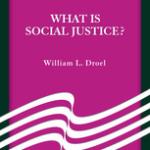The formula for parish decline, indeed for the decline of any enterprise, is to maximize the benefit for insiders rather than extend benefits to outsiders. People move away from a parish for normal reasons: a job relocation, downsizing or upscaling their residence, retirement or illness, and eventually death. Attracting new members always has to outpace the exodus. This no longer can happen by passively waiting for new arrivals to register with a parish. To continue on, parishes must grow. To grow requires giving it away.
Growth parishes have to be comfortable with a variety of pastoral styles; they have to be proactive with programs that undergo regular evaluation; they have to systematically reach out to new residents and to others who spend time in or around the parish/neighborhood. Growth parishes have to sometimes tailor liturgies for, let’s say, an arriving ethnic group or for young adults. In a growth parish the regular visits to nursing homes and hospitals must be augmented by an effort—no matter how rudimentary—to meet health care workers. The disposition for growth means, for example, that the parish CEO (who may or may not be their pastor) and/or the school’s principal participate in the local chamber of commerce and have regular contact with nearby social service agencies and with administrators in the public schools or the community college and with local government entities. Likewise the leaders of a growth parish (its staff and its members) will schedule dialogue sessions with members from nearby churches (including Catholic parishes) and with those from any nearby synagogue or mosque.
Why don’t parishes adopt the option for growth?
Most chancery leaders act in good will. They think about parish planning, however, almost exclusively in terms of the relative shortage of ordained personnel and the budget for parish buildings and perhaps for its staff. Only thereafter might Chancery-types think about the needs and opportunities presented by the neighborhood or town and its people. In this they are like private planning experts or even like those who converse at a neighborhood bar or barbershop. They comment on a parish/neighborhood by naming its problems.
Growth parishes should not look over the shoulder to the Chancery. They should not follow along with the problem approach to planning. The starting point for a growth analysis is an identification of assets–the current parish assets, the positives of the neighborhood and the potential resources that at the moment are a half-step beyond reach.
A parish, to express this point differently, is not either member-centered or mission-centered. It often, however, turns out parishes do better when they lead with the mission of the church and allow the needs of members to follow. Be church and then become church. To build the base, go to the peripheries.
Some parishes do not adopt the option for growth because they like things as they are or, to be accurate, as they seemingly are. These parishes are ambivalent about change. In particular, they have low anxiety-tolerance regarding either race, or immigration, or gentrification. Often these feelings are unexpressed. In one example, however, parish leadership distributed lawn signs reading Save Our Parish. Guess what happened?
To be continued…
Droel edits a print newsletter on faith and work titled INITIATIVES (PO Box 291102, Chicago, IL 60629)











